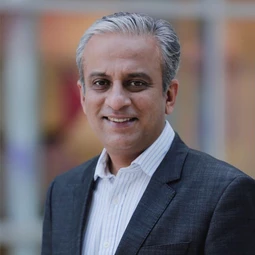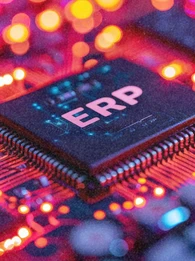
Mergers and acquisitions (M&As) and the need for M&A success are common. They help businesses achieve growth, create synergies and enhance competitiveness. However, the ROI of M&A activities extends far beyond the completion of the initial financial transaction.
The integration of complex and varied technology systems is one of the most challenging aspects of a merger or acquisition. Not only can firms find themselves faced with the challenge of blending businesses with opposing IT suites, but also widespread resistance to change across departments.
Strategically planned and well-executed technology integrations can align on-premise or eSaaS (enterprise software as a service) applications and unlock the potential of your merger or acquisition. Laborious or poorly managed integrations suffer from inefficiencies, reputational damage, and loss of key talent – all at a hefty commercial cost.
This is all of course true, but post merger or acquisition, what should you do? Well, there’s a good argument to say you should look at the experience you offer from the ground up. In other words, shift the focus beyond the completion of the financial transaction, and adopt an experience-led approach.
By focusing on designing and implementing integrated technology and processes with a focus on employee and customer experience, you can significantly enhance adoption rates and maximise the potential of the merged entities.
Key IT and experience challenges in M&As
Recognising the factors that lead to IT integration challenges during M&As is important. Notably, differences in applications and licensing between two companies can present obstacles. Each company develops its own individual systems, processes, partners, eSaaS applications and more, complicating technology integration. It’s critical to iron out these disparities as thoughtfully as possible. If not, they will impede operational efficiencies across all functions.
Of course, a lot of this thought can be derived from quantitative data. But at this point, you should spend some time understanding what employees want across the functions in relation to the systems they use, all while also forming a view of what can be changed with ease today vs what can change tomorrow as a vision for enterprise evolution. A great way to do this is by establishing internal research teams so that you can delve into employee insight and uncover existing pain points - then use that feedback to ensure a more tailored and successful technology integration. Taking this approach embodies some elements of employee experience and can help uncover things that would have otherwise gone unconsidered .
Beyond this more qualitative approach, without proper rationalisation, systems will be unable to communicate, limiting visibility and cross-organisational collaboration. This could create opacity in sales and business development across organisations leading to unclear pipeline or revenue expectations. In addition, using a broad suite of technologies results in application bloat, heightening costs and driving unwanted complexity in operations and support.
Compliance and security problems are also common. It is rare for an acquired and acquiring company to be aligned in terms of policies, documentation, and applications. If one company is more heavily regulated or the security of either party is not up to scratch, then business processes will need to get up to speed quickly to avoid non-compliance, security risks or delay.
However, all of these changes should be considered through an experience-led mindset, particularly when it comes to communicating the changes. Understanding the problems, and describing why the changes being proposed solve them in a way that is clear and understandable will help employees orientate themselves to the changes without impacting productivity.
Establishing a business process experience and engineering team
Successful mergers or acquisitions require the establishment of a clear integration strategy and robust change management programme that puts employees at the heart, as well as investment into data integration platforms and scalable infrastructure. However, it can be tricky to manage all of these moving parts effectively and concurrently.
Therefore, organisations should establish a dedicated business process experience and engineering team capable of developing a clear road-map and plans that cover the spectrum of requirements and human insight from all departments, finance, operations, marketing, sales and HR .
Here’s some of the critical responsibilities that a business process experience and engineering team should cover:
- Capturing insight from individuals about existing systems through interviews targeted at more deeply understanding the current state.
- Using architecture or service blueprints and annotating them with insight to clearly understand the dependencies between individuals, teams and departments.
- Outlining priorities to ensure applications, systems, data and stakeholders are aligned for a cohesive environment.
- Easing difficulties in identifying the right solution and the cost that comes with combining disparate systems and environments.
- Being effective in rationalising and consolidating expansive technology landscapes with directed technology landscapes that meet the needs of the business, customers and employees.
- Implementing new policies to enforce information and data privacy programs that keep the newly merged organisations safe from threats to confidentiality and compliance.
- Effective training post-M&A. There should be hands-on interaction with the new technology, while training materials should speak directly to real pain points, articulating how the integrated systems will address these issues, and demonstrate ease of use.
Instead of hoping that an effective technological equilibrium will eventually be struck, business process experience and engineering teams can work consultatively across all functions and create a smooth and speedy integration process, determining which systems and data you should keep and why, as well as how to communicate changes to employees in a way that will resonate with them. With this overarching scope, clear and transparent plans including integration timelines must be developed and shared widely, with the implications and actions that people need to take clearly outlined.
Seeking scalable support
Bringing in agnostic perspectives into these teams can offer insight based on work done in other industries and businesses and the challenges faced. This view can be impartial and augment the existing narrative around the systems that are in place.
Moreover, as part of this shift, it’s vital that business process experience and engineering teams are not just aware of their siloed services, but are also aware of the interplay between them and their respective maturities and any conflicts in versioning or setup. To garner awareness and consideration of the nested dependencies between systems and eSaaS platforms, experts capable of performing both experience and architectural reviews, with a fresh pair of eyes and a new brief, could help better identify areas where the number and complexity of technologies can be reduced as well as simplifying existing journeys for common processes.
This involves a discovery process and building a specific business case that is suited to a business’ unique needs. Taking more of a strategic view to define a way of evolving, enhancing and optimising the use of your technology suite and employees’ experience of it for the future will be much more effective in the long- term by setting solid foundations upon which they can serve customers.
Taking a holistic and strategic approach to the challenge allows businesses to consistently identify areas for improvement, alleviate pain points and enhance operational efficiency over an extended period. This, in turn, ensures you’re giving your leadership a clear ROI on your M&A activity from an eSaaS and wider experiential perspective.








